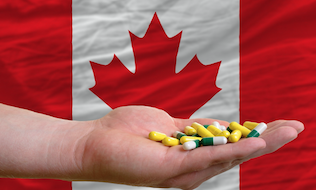
Public drug plan spending continued its upward trend in 2016-17, though at a much slower rate rather in 2015-16, according to a new report by the Patented Medicine Prices Review Board.
The analysis, which focuses on the public drug plans participating in the National Prescription Drug Utilization Information System initiative, found spending increased just 1.9 per cent in 2016-17, compared to a 10.8 per cent rise in 2015-16. Drug costs, which represented 79 per cent of expenditures, were up by two per cent, while dispensing costs, which represented 21 per cent, rose 1.6 per cent.
Read: High-cost drugs account for 26% of private plan costs in 2017: PMPRB
The increases were the result of a greater use of high-cost drugs and reduced generic savings, as well as a drop in the use of direct-acting antiviral drugs used for hepatitis C, according to the PMPRB.
In dollar terms, prescription drug spending for public plans was up by $1.9 billion in 2016-17 and have experienced a compound annual growth rate of 4.1 per cent. However, overall average dispensing fees decreased by 1.1 per cent, which the report attributed to a 2.4 per cent drop in Ontario.
The largest segment of the drug market, patented drugs not including direct-acting antivirals, grew by 5.7 per cent, while drugs that exceed $10,000 per year in treatment costs grew by 17.2 per cent, noted the report. High-cost drugs represented about 28 per cent of total drug costs, despite being used by fewer than two per cent of drug plan beneficiaries.
Read: Orphan drugs hit 42% of new pharmaceuticals in Canada in 2016
